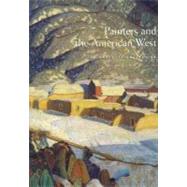The collection is wide-ranging in scope, covering every phase in the history of American art since the 1820s. There are works from all the major artists who have depicted the West, including those who painted western subjects only occasionally as well as those whose subjects were predominantly western. Among the artists represented are Albert Bierstadt, George Caleb Bingham, George Bellows, Ernest Blumenschein, George Catlin, Stuart Davis, Asher B. Durand, Marsden Hartley, Childe Hassam, George Inness, Thomas Moran, John Marin, Alfred Jacob Miller, Georgia O'Keeffe, Frederic Remington, Charles Russell, and Walter Ufer. The collection is particular








